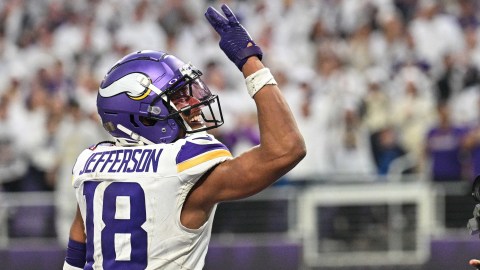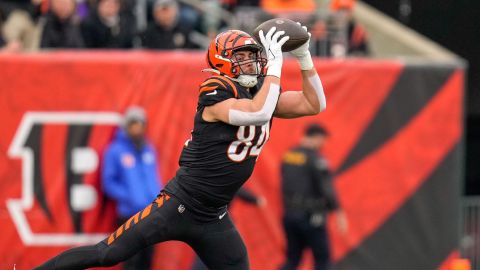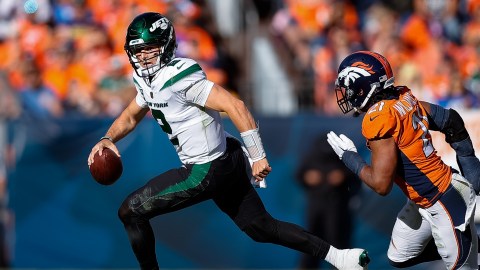FOXBORO, Mass. — The New England Patriots have to go back to the drawing board this week after losing pass-catching running back Dion Lewis for the season with a torn ACL.
Brandon Bolden took over the role after Lewis went down in the third quarter of Sundays’ 27-10 win over the Washington Redskins, but when Lewis missed Week 7’s matchup with the New York Jets, James White stepped up, catching passes on third down. White was inactive Sunday, and Bolden was held out with a hamstring injury in Week 7, so it’s unclear who will get the first crack at taking over the pass-catching back position moving forward.
The Patriots always have utilized the third-down back since head coach Bill Belichick took over in 2000. Kevin Faulk originated the position, then it was passed down to Danny Woodhead, Shane Vereen — who faces off against his old team as a member of the New York Giants this week — and Lewis.
“It’s a pretty important position in our offense,” quarterback Tom Brady said Wednesday. “Dion did a great job of it this year. Brandon has done a great job when he’s had his chance. James White has done it for us, and we’ve had some great players at that position over the years. So I think it’s dependability, because there are a lot of things that you ask that player to do. Not just catch the ball, but when you hand it to him, what are you going to do and blitz pickup, and it’s kind of a lot of things that happen back there.
“We have quite a few protections, so when it comes down to it, you’ve got to have someone that you have a lot of confidence in that can obviously be a playmaker with the ball but also be dependable to do some dirty work — that when the ball is getting thrown to (Rob Gronkowski) or (Julian Edelman) or Danny (Amendola) or Jo (Brandon LaFell), you’ve got someone in the backfield that’s picking up blitzers or maybe helping clean out the pocket. Hopefully, we can keep plugging away at it.”
Belichick detailed the history of the position Wednesday during his news conference.
“I’d say it kind of started in the ’80s, as I remember it,” Belichick said. “In the early ’80s and ’70s, usually the same 11 guys were on the field for every play, and then you got a little bit to the third receiver, but the tight ends were pretty good and those guys were good receivers — they weren’t really guys you were looking to take off the field. So you played the same 11 guys on offense, you played the same 11 guys on defense. There was a little bit of nickel defense in the late ’70s where teams would put in a defensive back for a linebacker, but it was the same thing. It was just kind of a one-for-one substitution.
“Then I think you saw teams like Washington when (Joe) Gibbs was there have the big back, whether it was George Rogers or (John) Riggins or whoever it was, and then they had (Joe) Washington or Kelvin Bryant or that type of player as their sub back, and it would be a true one-for-one situation. We did that at the Giants, had a lot of success with (Dave) Meggett, Tony Galbreath, guys like that. That was into the late ’80s and the ’90s. And then a lot of teams started doing it where they found that third-down back, first of all, was less of a load for one guy to be out there for every single play, and then, secondly the skills of that player, ability to separate and have quickness and make plays with his hands in the passing game as opposed to just the ball carriers, sometimes you could have both instead of just trying to find one guy to do everything, which is harder.
“There are always going to be some backs in the league that can do that, but I think it was a little easier to find two guys rather than find one who can do everything or find two — one to do it and one guy to back him up. It was a way of splitting the load. So I’d say that’s kind of evolved, evolved trough the mid-’80s and by probably a decade later it’s the way a lot of teams were going. When you had guys like Tony Dorsett and Billy Sims and Thurman Thomas and guys like that, you didn’t need to sub anybody. You put them in there, do whatever you want with them – throw it to them, run 20 times a game. They were all really good at that. But the specialization gives in particular with Washington and the guys that went on from his system like Dan Henning and guys like that. They adopted that same type of philosophy.”
Thumbnail photo via Kevin Hoffman/USA TODAY Sports Images




